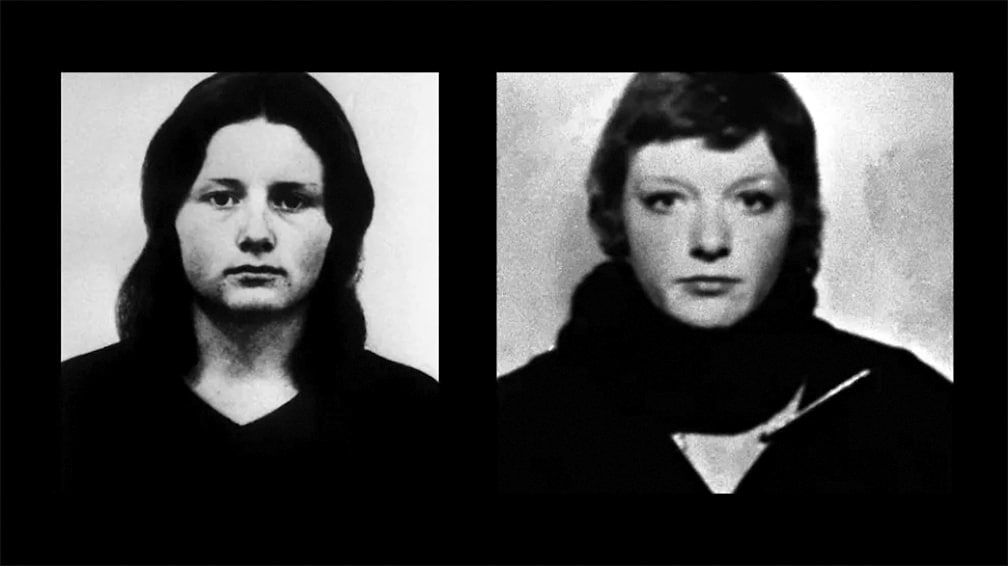
The Price sisters are two of the most famous female republicans in Irish history. Dolours is the more well-known of the two because of inflammatory comments she made about Gerry Adams and the death of Jean McConville in interviews before her death. The focus this month however – in a continuation of last month’s article on hunger strikes – is on the strike the sisters went on in Brixton prison whilst incarcerated for the London bombings, as well as the effects that the strike and the force feeding the sisters endured had on their immediate and future lives.
In 1971, Dolours, together with Marian, joined the Provisional IRA. In 1972 Dolours joined an elite group within the IRA called ‘The Unknowns’ commanded by Pat McClure. The unknowns were tasked with various secretive activities and transported several accused traitors across the border into the Republic where they were ‘disappeared’; some of whom have still not been discovered. Dolours claimed that she, Pat McClure, and a third unknown were tasked with killing Jean McConville, with the third unknown actually shooting her.
Dolours was in charge of the car bombing attacks in London on March 8, 1973, which injured over 200 people; and is believed to have contributed to the death of one person who suffered a fatal heart attack.
Dolours and Marian along with Gerry Kelly, Hugh Feeney and six others, were arrested as they were boarding a flight to Ireland on the day of the bombing. They were tried and convicted at the Great Hall in Winchester Castle on November 14, 1973. Although originally sentenced to life imprisonment, which was to run concurrently for each criminal charge, their sentence was eventually reduced to 20 years. The Price sisters served seven years for their part in the bombings.
Following the conviction and sentencing of the London bombers, all eight immediately announced they would go on hunger strike, in pursuit of a demand to be returned to Northern Ireland to serve out their sentences there. Not only would transfer to a jail in Northern Ireland bring the four hunger strikers closer to their families and to IRA comrades, but they would also qualify as special category prisoners, a status close to the classification of ‘political prisoners’. This would mean that they would not have to do prison work, could wear their own clothes and mingle more or less freely with associates. The contrast to the strict, disciplined life that faced them in an English jail could not have been greater. Within days four of the prisoners dropped out, leaving the Price sisters, Dolours and Marian, and two of the men, Hugh Feeney and Gerry Kelly to pursue the protest.
Famous Irish republican Thomas Ashe had gone on hunger strike in Mountjoy Jail in 1917 and was force fed. A contemporary of Ashe’s, Eamon O’Dwyer later described to the Bureau of Military History what had happened to him during the forced-feeding process or ‘artificial feeding’ as it is referred to by the British authorities:
“Each man in turn was brought to a large room in which they had the usual operating chair. We were tied into this chair with bands around the legs and arms, a band around the body and also a band around the neck, and into each man’s mouth an instrument was passed to keep it open. The forcible feeding outfit was brought along—a pint of milk with an egg broken into it, the pump and the tubing. The tubing was passed down through the mouth and into the stomach. I never had any fear of hunger striking and that was the first one, but I certainly did not like this pipe being passed down through my throat and I began to have a horror of it. I must admit that I was very much afraid of it, and often in years afterwards I woke up and felt this damn pipe or tube going down my neck like a snake. Every one of the crowd who suffered this vomited terribly. The days passed with this [force-feeding] as the only relief from the monotony of being held in the cell.”
Two weeks into their hunger strike, the British authorities made the decision to force feed Dolours, Marian, Gerry and Hugh. Marion described her experience of this ordeal in detail:
“Four male prison officers tie you into the chair so tightly with sheets you can’t struggle. You clench your teeth to try to keep your mouth closed but they push a metal spring device around your jaw to prise it open. They force a wooden clamp with a hole in the middle into your mouth. Then, they insert a big rubber tube down that. They hold your head back. You can’t move. They throw whatever they like into the food mixer; orange juice, soup or cartons of cream if they want to beef up the calories. They take jugs of this gruel from the food mixer and pour it into a funnel attached to the tube. The force-feeding takes fifteen minutes but it feels like forever. You’re in control of nothing. You’re terrified the food will go down the wrong way and you won’t be able to let them know because you can’t speak or move. You’re frightened you’ll choke to death.”
Dolours Price and her sister Marian, along with Hugh Feeney and Gerry Kelly, spent 205 days on hunger strike, 167 of which were punctuated by daily, and sometimes twice daily bouts of forced feeding. Feeney’s and Kelly’s prison protests attracted only a fraction of the public attention that the Price sisters received. The trauma of the force feeding often made hunger strikers vomit. The British authorities believed the sisters were throwing up for vanity reasons and continued to force feed them.
Both now suffering from anorexia and other ailments, Marion Price was released in 1980 and Dolours Price in 1981 on humanitarian grounds. After their release the sisters continued to struggle with anorexia for many years.
In 1983, Dolours married Irish actor Stephen Rae. They divorced in 2003. Throughout her life she suffered from depression and PTSD, as well as having a long-time addiction to alcohol and prescription drugs.
The more famous Irish hunger strikers are the ones who died. Particularly Bobby Sands and the nine men who followed him. In a way, those men and their legacies, as fighters and emblems, are easier to make sense of than Price’s. Her story points to a more complicated experience, in which the traumas of war seep into people’s emotional and mental fabric. Marian is still alive. Dolours died in 2013 from a toxic mix of prescribed medications at her home in Dublin.



